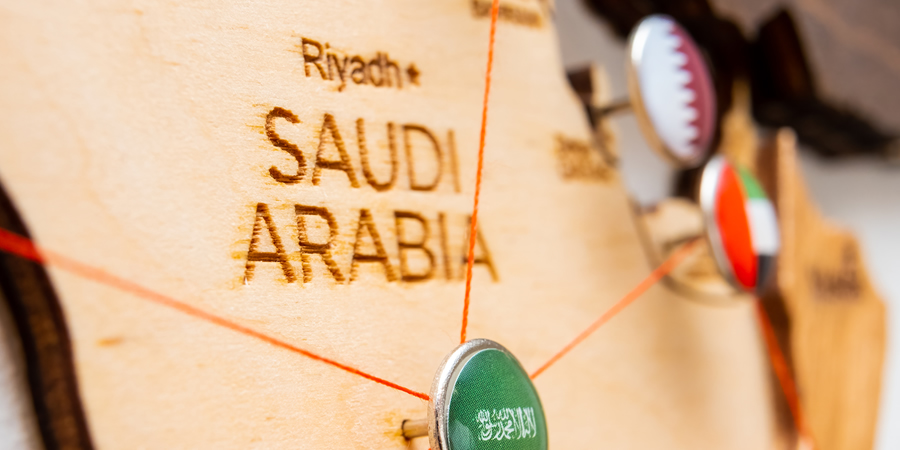Massive subsea cable investments are being directed to the Middle East region. With almost 1,200 landing stations around the world, Saudi Arabia has its fair share of landing stations, allowing efficient connectivity between continents and facilitating global communication networks.
At the crossroads of Europe, Asia, and Africa, Saudi Arabia's geographical location positions it as a crucial hub for submarine cable routes.
The country's extensive coastline along the Red Sea and the Arabian Gulf provides ideal landing points for cables connecting these regions.
Existing Footprint
In 2022, stc Group unveiled the ‘Saudi Vision Cable,’ the first high-capacity submarine cable in the Red Sea region. Stretching 1,160,000 meters, the cable delivers seamless connectivity with a capacity of up to 18 Tbps per fiber pair, connecting through four landing stations in Jeddah, Yanbu, Duba, and Haql.
In 2023, center3, a subsidiary of stc Group, expanded its submarine cable network landings in Saudi Arabia from four to nine. “This strategic development is a leap forward in making the Kingdom a digital hub for data traffic across three continents,” the company told Telecom Review.
Mobily has also been instrumental in positioning Saudi Arabia as a digital hub for international submarine cable systems. Abdullah Alghonaimi, VP Wholesale Operations, Mobily, proudly shared that the company boasts an extensive network of submarine cables, 12 global Points of Presence (PoPs), and 60,000 km of fiber optic networks, ensuring robust connectivity and high-performance services.
In a landmark deal, Mobily and Telecom Egypt signed a cooperation agreement to land the first Saudi-owned submarine cable linking Saudi Arabia and Egypt. This partnership enhances connectivity between the two nations and reinforces Saudi Arabia's role in regional telecommunications.
Last year, Mobily and Sparkle also signed a strategic agreement under which Mobily is finalizing the acquisition of dark fiber from Sparkle’s advanced submarine cable systems. Expected to be fully completed in 2025, this will enable seamless connectivity with strategic drop points in Chania, Palermo, Milan, and Marseille, further enhancing Mobily's international network capabilities.
In an effort to enhance cross-border collaboration, Saudi Arabia is collaborating with Greece to build a new data cable connecting Europe and Asia (estimated to be completed during Q4 2025). This initiative aims to strengthen the Kingdom's position as a central node in global data transmission.
According to the Submarine Cable Map, several cables with landing points in Saudi Arabia will be ready-for-service soon.
Africa-1, India Europe Express (IEX), and Raman will be ready in 2025; ANDROMEDA and SeaMeWe-6 in 2026; and EMC West-1 and West-2 in 2027.
Saudi Arabia's Significance in Submarine Cable Development
In a nutshell, here are the main reasons why Saudi Arabia is an ideal hub for submarine cable routes:
- Regional Connectivity: The Kingdom plays a pivotal role in enhancing regional connectivity across the Middle East. Submarine cables landing in Saudi Arabia connect neighboring countries such as Egypt, Jordan, and Bahrain, reinforcing regional telecommunications infrastructure. This connectivity is crucial for supporting economic activities, digital transformation, and international collaboration in the region.
- Diverse Routes: Saudi Arabia's investment in submarine cable infrastructure diversifies global routing options. By hosting multiple cable systems, the country reduces latency and enhances reliability in international communications. This diversification also mitigates risks associated with disruptions on one route, ensuring continuous connectivity for global data traffic.
- Digital Transformation Initiatives: The Saudi government's Vision 2030 initiative emphasizes digital transformation as a key pillar of economic diversification. Investments in submarine cables align with this vision by supporting the expansion of digital services, cloud computing, and high-speed internet access nationwide. This infrastructure is vital for fostering innovation and attracting international investments in technology and telecommunications sectors.
- Secure Infrastructure: Saudi Arabia's commitment to cybersecurity and infrastructure resilience enhances its attractiveness as a submarine cable hub. The country implements stringent security measures to safeguard underwater cable systems against cyber threats and physical damage, ensuring uninterrupted connectivity for global communications.
Submarine Cable Resilience
Today, 90% of all data communication between Europe and Asia passes through the Red Sea, a route increasingly impacted by geopolitical challenges.
Incidents such as the Red Sea disruptions have highlighted how critical these subsea cables are for business continuity.
In line with this, The Kingdom of Saudi Arabia has been chosen to join the International Advisory Body for Submarine Cable Resilience, highlighting its leadership and expertise in strengthening the security and resilience of vital submarine cable infrastructure.
The advisory body, established by the ITU in partnership with the International Cable Protection Committee, is dedicated to guiding the strategic improvement of submarine cable resilience. Its mission includes addressing key challenges, promoting best practices for cable protection, and fostering international cooperation, technical innovation, and investment strategies.
Also Read:
Future of Transforming Wholesale Telecom Ecosystem in Saudi Arabia
TRS-24 Panel: Wholesale Industry’s Significant Influence in the Era of Multi-Connectivity
Telecom Review Explores the Dynamic Evolution of Wholesale Services










